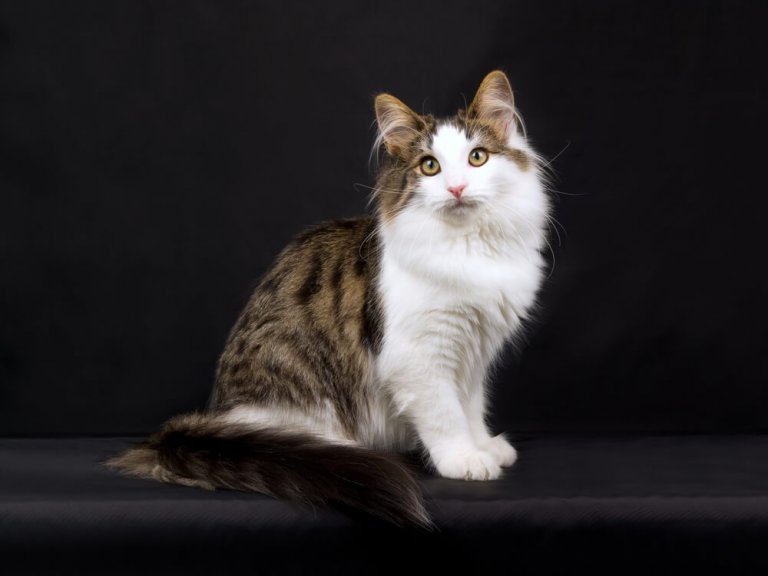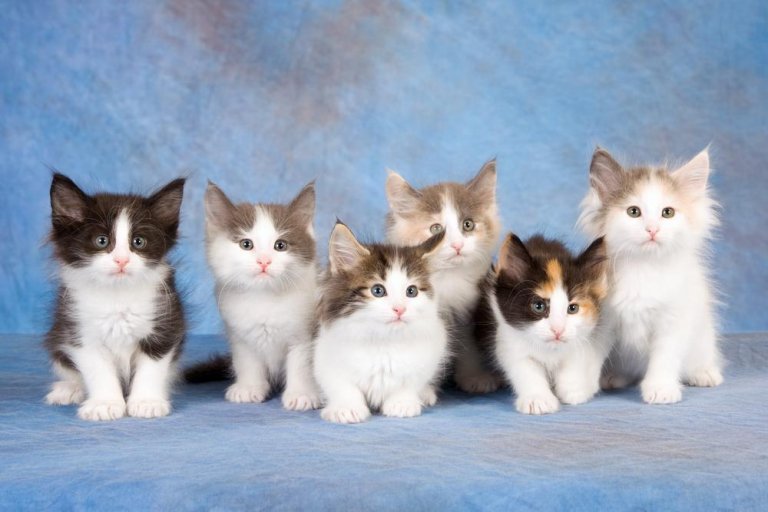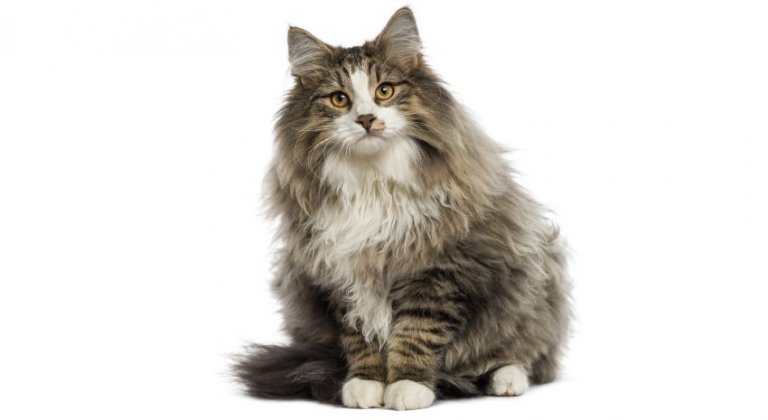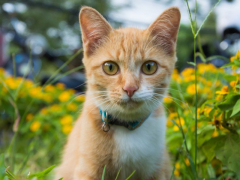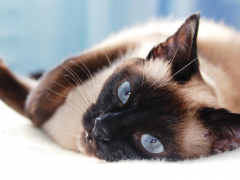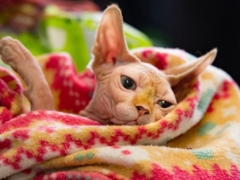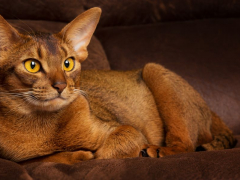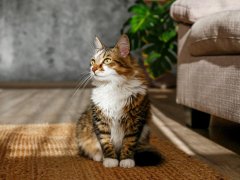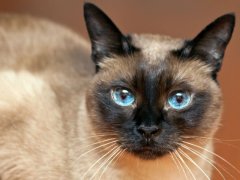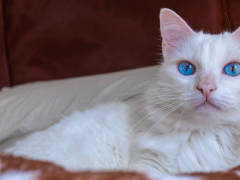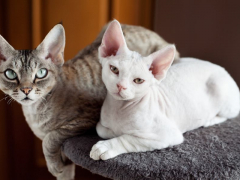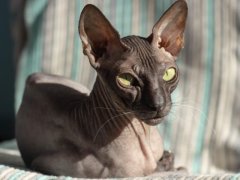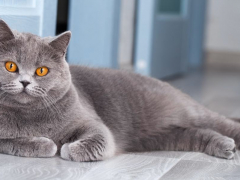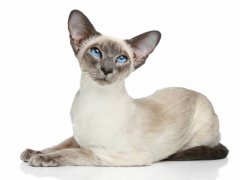Personality and Temperament
Striking looks and a warm personality help the Norwegian Forest Cat stand out from the crowd. This exquisite long-haired cat breed is an ancient one, with ample intelligence, fantastic social skills, and an appreciation for all of life's comforts.
Even though the Norwegian Forest Cat comes from a cold climate, these cats love to keep warm. They appreciate an indoor lifestyle with plenty of soft, comfortable surfaces to accommodate frequent naps. They also have an appreciation for their human families, but affection takes place on their terms rather than yours.
The Norwegian Forest Cat might decide to cuddle up in your lap or sleep on your pillow, but doesn't typically enjoy being picked up or held when it's not the cat's idea.
Despite the breed’s reputation for having quite an independent streak, Norwegian Forest Cats are loyal to their favorite people and are perfectly capable of making friends with other pets, including well behaved dogs and other friendly cats.
If you see similarities between the Norwegian Forest Cat and the Maine Coon, you’re not imagining things!
The two breeds do have quite a bit in common, including large stature, ultra-thick fur, and exceptional hunting prowess. Some experts believe that Norwegian Forest Cats might be one of the breeds that contributed to the development of the Maine Coon (which, like the Norwegian Forest Cat, is a natural breed).
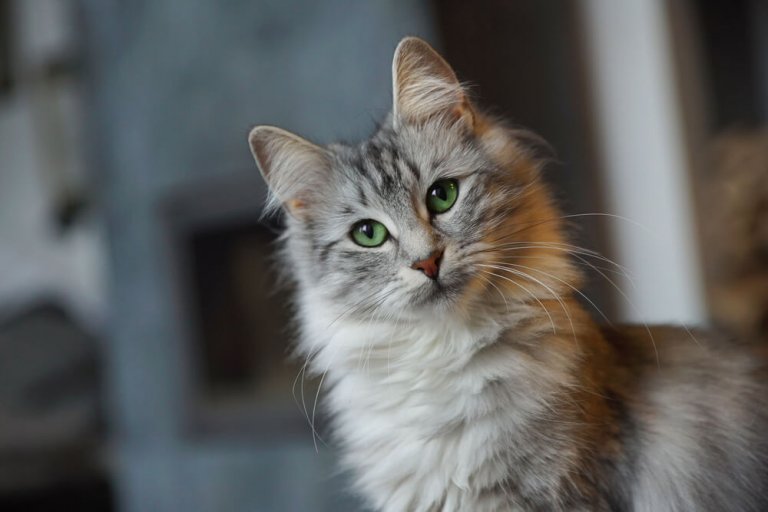
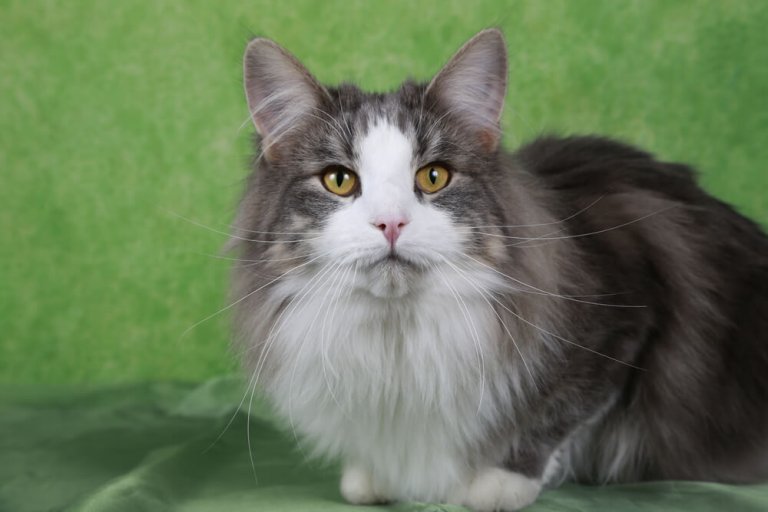
Care
Nutrition
Grooming
Exercise
Health
As a relatively large breed, the Norwegian Forest Cat might require more calories per day then the average cat, especially if they are very active. These cats need a high-quality diet and will thrive on high-protein food with real meat or fish as the primary ingredient.
If you are able to offer fresh food, your Norwegian Forest Cat will certainly appreciate it. At any rate, consider choosing food that contains extra omega fatty acids to support your pet's skin and keep their coat looking and feeling its best.
The Norwegian Forest Cat has a very thick double coat, but it requires far less frequent grooming than you might think. Weekly brushing or combing is usually sufficient to prevent mats and keep the luxurious coat looking its very best.
Additional grooming routines to consider include regular nail trimming and daily toothbrushing. Both should be introduced from a young age.
The Norwegian Forest Cat might be very fond of lounging, but this doesn't mean that it's a complete couch potato. These big, fluffy cats are athletes at heart, with a fondness for running, jumping, and climbing.
They have the unique ability to descend from their cat tree headfirst, and their size allows them to clear several feet in a single leap. Appropriate enrichment items are essential including tall cat trees, big scratching posts, and an abundance of toys.
Norwegian Forest Cats typically enjoy excellent health and are known for their longevity. It is not unusual for one of these cats to live well beyond 15 years. Even so, the Norwegian Forest Cat breed is prone to a few known health issues.
Although these don't occur often, it's important to be aware of their existence. Potential problems include glycogen storage disease type IV, which can be detected in parents via a DNA test. Glycogen storage disease type IV often causes kittens to be stillborn or survive for less than six months.
Norwegian Forest Cats might also suffer from polycystic kidney disease and hypertrophic cardiomyopathy.
History
The Norwegian Forest Cat is a natural breed, meaning that it developed over time without intentional intervention or human manipulation. The Norwegian Forest Cat—called skogkatt in Norwegian—was brought to Norway hundreds or perhaps even thousands of years ago. No one knows for certain whether they accompanied Turkish traders or if they were brought back by Viking raiders. What we do know is that Norwegian Forest Cats have an intriguing place in Norse mythology. For example, the giant cats that pulled the goddess Freya’s chariot were said to be skogkatts.
In 1938, a Norwegian Forest Cat was presented at a cat show. Shortly afterward, enthusiasts came together to form the Norwegian Forest Cat Club.
Like many other breeds, the Norwegian Forest Cat nearly became extinct during World War II. After the war however, members of the club came together to revive the breed and propel it back toward popularity.
Fédération Internationale Féline (FIFe) granted the breed official recognition in 1977. It took another 10 years for the Cat Fanciers' Association (CFA) to recognize the breed. CFA granted Norwegian Forest Cats full championship status in 1993. Today, major registries worldwide have accepted the breed with open arms.
